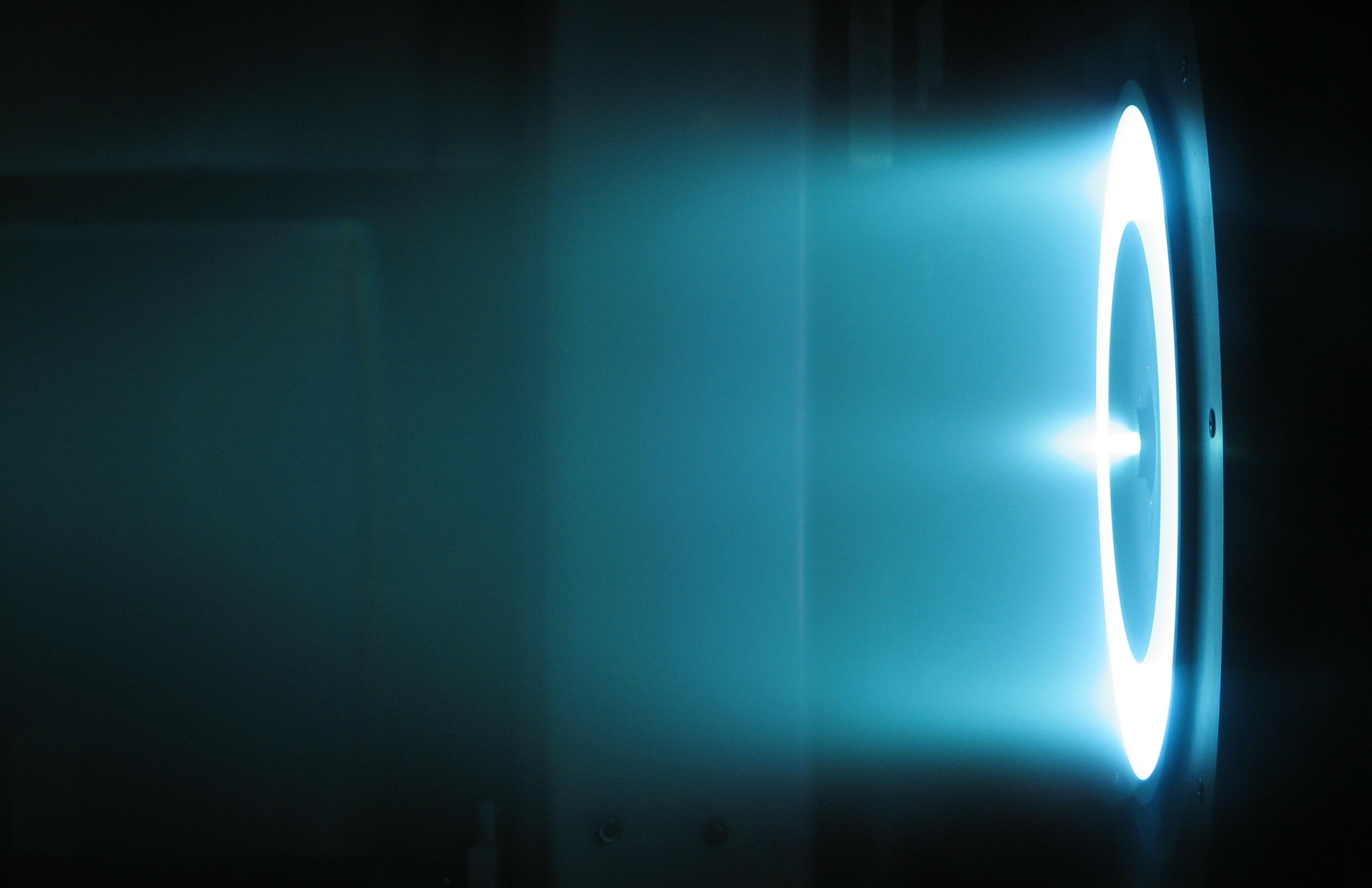
Spacecraft electric propulsion
Spacecraft electric propulsion (or just electric propulsion) is a type of spacecraft propulsion technique that uses electrostatic or electromagnetic fields to accelerate mass to high speed and thus generating thrust to modify the velocity of a spacecraft in orbit.[1] The propulsion system is controlled by power electronics.
Electric thrusters typically use much less propellant than chemical rockets because they have a higher exhaust speed (operate at a higher specific impulse) than chemical rockets.[1] Due to limited electric power the thrust is much weaker compared to chemical rockets, but electric propulsion can provide thrust for a longer time.[2]
Electric propulsion was first demonstrated in the 1960s and is now a mature and widely used technology on spacecraft. American and Russian satellites have used electric propulsion for decades.[3] As of 2019, over 500 spacecraft operated throughout the Solar System use electric propulsion for station keeping, orbit raising, or primary propulsion.[4] In the future, the most advanced electric thrusters may be able to impart a delta-v of 100 km/s (62 mi/s), which is enough to take a spacecraft to the outer planets of the Solar System (with nuclear power), but is insufficient for interstellar travel.[1][5] An electric rocket with an external power source (transmissible through laser on the photovoltaic panels) has a theoretical possibility for interstellar flight.[6][7] However, electric propulsion is not suitable for launches from the Earth's surface, as it offers too little thrust.
On a journey to Mars, an electrically powered ship might be able to carry 70% of its initial mass to the destination, while a chemical rocket could carry only a few percent.[8]
History[edit]
The idea of electric propulsion for spacecraft was introduced in 1911 by Konstantin Tsiolkovsky.[9][10] Earlier, Robert Goddard had noted such a possibility in his personal notebook.[11]
On 15 May 1929, the Soviet research laboratory Gas Dynamics Laboratory (GDL) commenced development of electric rocket engines. Headed by Valentin Glushko,[12] in the early 1930s he created the world's first example of an electrothermal rocket engine.[13][14] This early work by GDL has been steadily carried on and electric rocket engines were used in the 1960s on board the Voskhod 1 spacecraft and Zond-2 Mars probe.[15]
The first test of electric propulsion was an experimental ion engine carried on board the Soviet Zond 1 spacecraft in April 1964,[16] however they operated erratically possibly due to problems with the probe.[17] The Zond 2 spacecraft also carried six Pulsed Plasma Thrusters (PPT) that served as actuators of the attitude control system. The PPT propulsion system was tested for 70 minutes on the 14 December 1964 when the spacecraft was 4.2 million kilometers from Earth.[18]
The first successful demonstration of an ion engine was NASA SERT-1 (Space Electric Rocket Test) spacecraft.[19][20] It launched on 20 July 1964 and operated for 31 minutes.[19] A follow-up mission launched on 3 February 1970, SERT-2. It carried two ion thrusters, one operated for more than five months and the other for almost three months.[19][21][22]
Electrically powered propulsion with a nuclear reactor was considered by Tony Martin for interstellar Project Daedalus in 1973, but the approach was rejected because of its thrust profile, the weight of equipment needed to convert nuclear energy into electricity, and as a result a small acceleration, which would take a century to achieve the desired speed.[23]
By the early 2010s, many satellite manufacturers were offering electric propulsion options on their satellites—mostly for on-orbit attitude control—while some commercial communication satellite operators were beginning to use them for geosynchronous orbit insertion in place of traditional chemical rocket engines.[24]
Types[edit]
Ion and plasma drives[edit]
These types of rocket-like reaction engines use electric energy to obtain thrust from propellant.[25]
Electric propulsion thrusters for spacecraft may be grouped into three families based on the type of force used to accelerate the ions of the plasma: